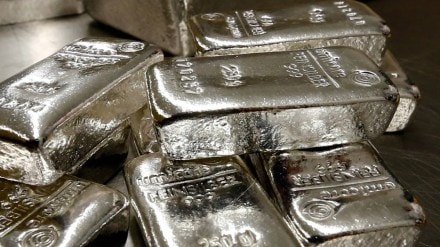In recent months, gold prices have rallied both globally as well as in India. However, silver prices have remained muted, comparatively.
Since the beginning of the calendar year, gold has jumped 25.1% while silver has risen by 13.5%. On Friday, silver closed at Rs 97,442 per kg at the MCX spot market.
No wonder, analysts are betting on silver to rise faster than gold in the coming years. Ajay Kedia, director at Kedia Advisory, expects silver to give higher returns compared to gold in coming months as the rally in the latter may take a breather.
Another key reason for analysts to bet on silver is the rising gold-to-silver ratio, which has gone over 100 in the past few months – only the second time since the Covid crisis when the ratio hit 126. The ratio is calculated on the basis on ounces of silver that can be purchased with one ounce of gold. A high ratio suggests that gold has risen much faster than silver, which if one goes by historical data, is unsustainable.
Over the last four years, this ratio remained above 80. In the last 25 years (since 2000), this average stands at 68 while the 10-year average is 85. The ratio in the past decade was also high because gold offered 260% return while silver gave returns of 60%.
According to the World Silver Survey 2025 by the Silver Institute, “A high gold-to-silver ratio should help silver, as some investors may view the white metal as undervalued. Also, expected US interest rate cuts, along with elevated economic and geopolitical uncertainties, should continue to fuel gold and silver investment.” However, it also cautions that a weakening economic outlook globally could be a drag on silver because of its industrial use.
Analysts at Julius Baer believe that silver has been trailing gold due to its large share of industrial demand, which has been weighing on the market mood and could not be compensated for by rising investment demand.
“While we generally see silver moving in gold’s slipstream, also benefitting from a weaker US dollar, it is susceptible to underperformance as long as risk aversion prevails,” said the report.
What makes silver more susceptible to economic activity is its industrial use. That is, over 60% of demand comes from industry and it has been steadly rising. In 2024, 39% of the total silver demand was from investors, jewellers and silverware (in 2016, this number stood at almost 50%).
Kedia, meanwhile, is betting on an improvement in the economy as it will lead to high industrial demand for silver. Further, undervalued precious metals will find more takers among the investing class, as gold has had a very long run. He advises buying silver for higher returns.
So far as India’s investment demand is concerned, investors are gradually shifting to silver exchange-traded funds or products. According to the Silver Institute data, “Silver ETFs have recently seen remarkable growth in India. Holdings surged from 783 tonne in 2024 to a record high of 1,200 tonne. The number of fund houses offering silver ETFs has also tripled in recent years, rising from just four at the end of 2022 to 12 now.
